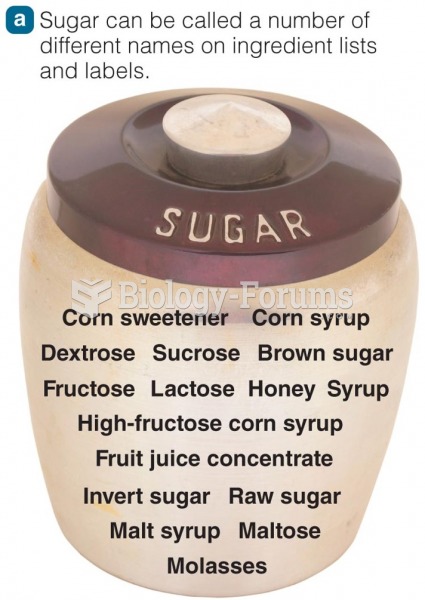|
|
|
Cytomegalovirus affects nearly the same amount of newborns every year as Down syndrome.
Recent studies have shown that the number of medication errors increases in relation to the number of orders that are verified per pharmacist, per work shift.
Between 1999 and 2012, American adults with high total cholesterol decreased from 18.3% to 12.9%
Drug abusers experience the following scenario: The pleasure given by their drug (or drugs) of choice is so strong that it is difficult to eradicate even after years of staying away from the substances involved. Certain triggers may cause a drug abuser to relapse. Research shows that long-term drug abuse results in significant changes in brain function that persist long after an individual stops using drugs. It is most important to realize that the same is true of not just illegal substances but alcohol and tobacco as well.
The most common treatment options for addiction include psychotherapy, support groups, and individual counseling.







